How much sensitivity do you get from the MTM configuration in comparison with a 2½-way 1-2 watts?
Why not something like this with a 2½-way with MLTL cab and a then a waveguided dome?
Speedster TMM - undefinition
I know this is using a 4" bass driver.
Why not something like this with a 2½-way with MLTL cab and a then a waveguided dome?
Speedster TMM - undefinition
I know this is using a 4" bass driver.
With respect, burgunder, you were a bit quick to jump into this thread with your notions of Paul Carmody.
Popular as Paul is, he is strictly second-tier at this moment. TBH, he lost me with his undamped tank-notch on the "Overnight Sensations". So bad, I was speechless.😱
We are all toilers in the vinyard. IIRC, John the Baptist admitted there was one who would come after him, "The latchets of his Sandals he would be unfit to tie..."
IDK. Much to enjoy in this interview with Alan Shaw of Harbeth.
The grey backdrop in this interview says something about colouration in sound: YouTube.
For a more detailed examination of what Alan Shaw does look here: YouTube
Bottom line? Harbeth has just had it's most successful year ever. Must be doing something right. 😎
Popular as Paul is, he is strictly second-tier at this moment. TBH, he lost me with his undamped tank-notch on the "Overnight Sensations". So bad, I was speechless.😱
We are all toilers in the vinyard. IIRC, John the Baptist admitted there was one who would come after him, "The latchets of his Sandals he would be unfit to tie..."
IDK. Much to enjoy in this interview with Alan Shaw of Harbeth.
The grey backdrop in this interview says something about colouration in sound: YouTube.
For a more detailed examination of what Alan Shaw does look here: YouTube
Bottom line? Harbeth has just had it's most successful year ever. Must be doing something right. 😎
Last edited by a moderator:
Right, well I'll try to answer the question that was asked.
The short version is that there is no fixed answer as it's circumstance dependent. Assuming the same drivers & baffle dimensions in both cases, and parallel wiring of the midbass units in the MTM, then they should be much of a muchness, which will be about that of a single example of the driver on an IEC baffle in anechoiuc conditions. The 2 1/2 way uses the extra LF unit to compensate for step-loss, the MTM has +6dB output (+3dB from the doubled cone area, another +3dB for the halved impedance), which you'll then attenuate to counter the step-loss, bringing you once again back to roughly that of a single drive unit.
In practice it's not as simple; the energy below the transition from 4pi to 2pi radiation space doesn't just magically disappear, so, particularly if the speaker is near vertical boundaries, you will almost never get a full -6dB step loss. As a result, 2 1/2 way speakers can become bass-heavy unless well out into the room. Theoretically the MTM may have less distortion higher up as you've got two drivers doing the work, although many modern tweeters have lower distortion levels (if used well) than the midbass drivers, so this is far from being an invariable.
Basically, they're different, and usually different objectives are in play.
The short version is that there is no fixed answer as it's circumstance dependent. Assuming the same drivers & baffle dimensions in both cases, and parallel wiring of the midbass units in the MTM, then they should be much of a muchness, which will be about that of a single example of the driver on an IEC baffle in anechoiuc conditions. The 2 1/2 way uses the extra LF unit to compensate for step-loss, the MTM has +6dB output (+3dB from the doubled cone area, another +3dB for the halved impedance), which you'll then attenuate to counter the step-loss, bringing you once again back to roughly that of a single drive unit.
In practice it's not as simple; the energy below the transition from 4pi to 2pi radiation space doesn't just magically disappear, so, particularly if the speaker is near vertical boundaries, you will almost never get a full -6dB step loss. As a result, 2 1/2 way speakers can become bass-heavy unless well out into the room. Theoretically the MTM may have less distortion higher up as you've got two drivers doing the work, although many modern tweeters have lower distortion levels (if used well) than the midbass drivers, so this is far from being an invariable.
Basically, they're different, and usually different objectives are in play.
I only mentioned the the Speedsters as an example of a 2½-way MLTL.
A modern "Ariel" should of course have 5" drivers and a dome tweeter preferably with a waveguide.
A modern "Ariel" should of course have 5" drivers and a dome tweeter preferably with a waveguide.
I still like what I am seeing with the Peerless 830860.
Scottmoose, if I give you a 40 minute recording of Alan Shaw trying to explain his whole loudspeaker philosophy:
YouTube
And you reply within 30 minutes. Well, clearly you weren't listening! 😀
I can only suggest that you start to be more receive than transmit...
TBH, I never quite know if over-damped, critically-damped or under-damped floats my boat.
Which is to say: polycone, paper cone or metal cone.
I found Alan Shaw's ideas interesting, and FWIW, he does high-order crossovers, and he also does over-damped plastic polycone drivers.
The whole idea of listener fatigue is interesting. Much as we like a lively speaker, IMO, the whole thing wears off quickly. I prefer smooth.
Scottmoose, if I give you a 40 minute recording of Alan Shaw trying to explain his whole loudspeaker philosophy:
YouTube
And you reply within 30 minutes. Well, clearly you weren't listening! 😀
I can only suggest that you start to be more receive than transmit...
TBH, I never quite know if over-damped, critically-damped or under-damped floats my boat.
Which is to say: polycone, paper cone or metal cone.
I found Alan Shaw's ideas interesting, and FWIW, he does high-order crossovers, and he also does over-damped plastic polycone drivers.
The whole idea of listener fatigue is interesting. Much as we like a lively speaker, IMO, the whole thing wears off quickly. I prefer smooth.
Last edited:
I was not looking at links to videos you posted, Steve, nor was I addressing you. Our friend burgunder asked a straightforward question about sensitivity differences between a 2 1/2 way & an MTM, not for a 40 minute video of Alan Shaw explaining his personal speaker design philosophy, so I endevoured to provide him with an answer to that question.
I could probably address the subject of SPL levels in a 2.5 way as well as most. An MTM is not wildly different. 😀
PEERLESS-NOMEX-164
AFAIK, the Nomex 164 was a severely troubled speaker, much as I like Troels Gravesen. IIRC, Loads of people complained about it. A certain harshness. 😱
How it works is you build a two-way, but add a bass speaker (the 0.5) to address room-oriented bafflestep issues. And the room is the monster, IMO.
Is this stuff hard?
What I did at Imperial College about 40 years ago was analog and digital signal processing. We found an equivalence between the analog and digital realms defined in the Z-transform.
What it means is that Analog worked quite well, based on bandwidth and signal to noise ratio. Digital could work well too, based on bandwidth and sampling rate. TBH, I was interested in the whole overall picture. I think I decided it was all about Claude Shannon's information Theory.
TBH, I was an embarrassment to the Professors, and I would excuse my favourite lecturer, Tony Constantinides here, who deservedly went on to be a full Prof. They mostly had no idea what I was talking about.
I had notions about geometry:
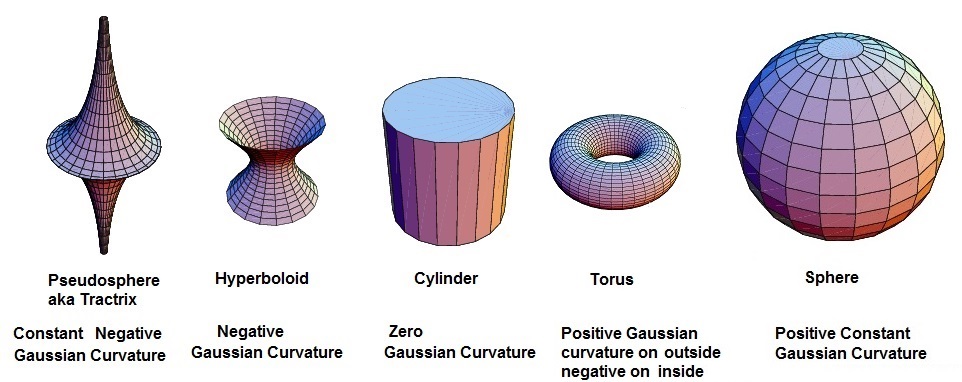
Choose your poison!
I had notions about diffraction:
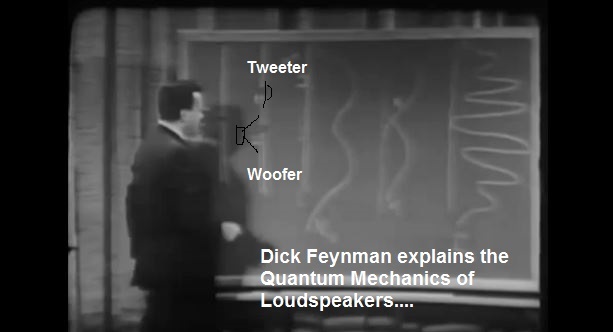
But what has Quantum Mechanics got to tell us here?
Probably those Profs were more interested in a secure pension and a quiet retirement without any "Enfant Terrible" rocking the boat. And who can blame them? 😀
These days, as a mathematician, I have considerably moved on from what is just the two-dimensional Clifford algebra of speakers. Hardly hacks it in a four-dimensional space-time. The only thing that keeps me interested is I like good sounds in my Apartment.
PEERLESS-NOMEX-164
AFAIK, the Nomex 164 was a severely troubled speaker, much as I like Troels Gravesen. IIRC, Loads of people complained about it. A certain harshness. 😱
How it works is you build a two-way, but add a bass speaker (the 0.5) to address room-oriented bafflestep issues. And the room is the monster, IMO.
Is this stuff hard?
What I did at Imperial College about 40 years ago was analog and digital signal processing. We found an equivalence between the analog and digital realms defined in the Z-transform.
What it means is that Analog worked quite well, based on bandwidth and signal to noise ratio. Digital could work well too, based on bandwidth and sampling rate. TBH, I was interested in the whole overall picture. I think I decided it was all about Claude Shannon's information Theory.
TBH, I was an embarrassment to the Professors, and I would excuse my favourite lecturer, Tony Constantinides here, who deservedly went on to be a full Prof. They mostly had no idea what I was talking about.
I had notions about geometry:
Choose your poison!
I had notions about diffraction:
But what has Quantum Mechanics got to tell us here?
Probably those Profs were more interested in a secure pension and a quiet retirement without any "Enfant Terrible" rocking the boat. And who can blame them? 😀
These days, as a mathematician, I have considerably moved on from what is just the two-dimensional Clifford algebra of speakers. Hardly hacks it in a four-dimensional space-time. The only thing that keeps me interested is I like good sounds in my Apartment.
Yes, well, it's not entirely surprising that the Nomex 164 polarised views; Troels crossed it at about 3.3KHz, or only about 700Hz under the point at which the driver goes into uncontrolled breakup, and even with the c. LR4 slopes he was using, being generous that only put it down about 12dB from the nominal. The large peaking in HD3 this breakup causes (see the distortion measurements) around 1.5KHz is not going to be significantly affected. QED that some will be happy and some won't. For the same reason. you need to stamp heavily on the bell modes of rigid alloy cones optimised for pistonic operation over a narrow BW, or you'll still have a dose of the HD products lower down. However, none of this has anything to do with the Ariel speakers, beyond the broad principle that cone modes need to be sufficiently suppressed; this particular matter was not an issue for the Ariels since the P13 had a lot of self-damping and an extremely linear response.
Last edited:
In practice it's not as simple; the energy below the transition from 4pi to 2pi radiation space doesn't just magically disappear, so, particularly if the speaker is near vertical boundaries, you will almost never get a full -6dB step loss
Also worth noting that as one reduces the depth of the shelf that is BS below the BS frequency, one ends up increasing the level of the room response. Add 6dB of BSC to make things flat on axis means the room response is lifted 6dB above flat.
One has to chosse a compromise that works for your room, your taste, and the supporting kit.
dave
Does anyone find +6dB bafflestep that difficult?
This is a thought experiment by Steen Duelund about the box and the room:
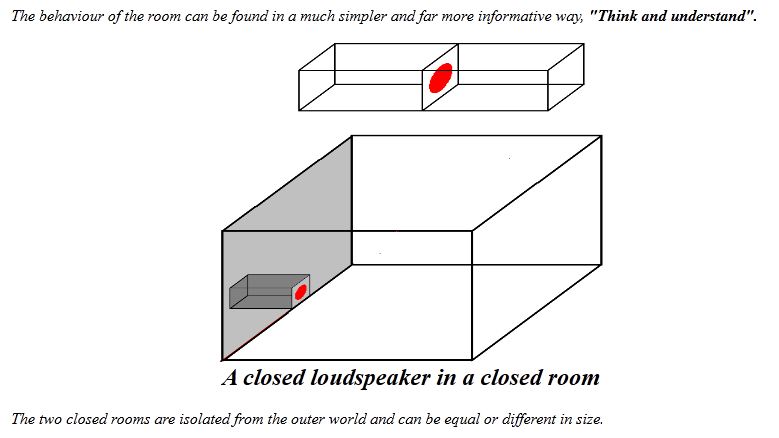
TBH, this gets very little love at this forum. But really the speaker is a box, and the room is a box. So like Alan Shaw said, it's boxes within boxes.
Or like the lady who said the world is held up by a turtle, and somebody asked her what is holding that turtle up, she said it's turtles all the way down. 😀
Steen went way further into filter theory. He gave us the theory of a 3-way:
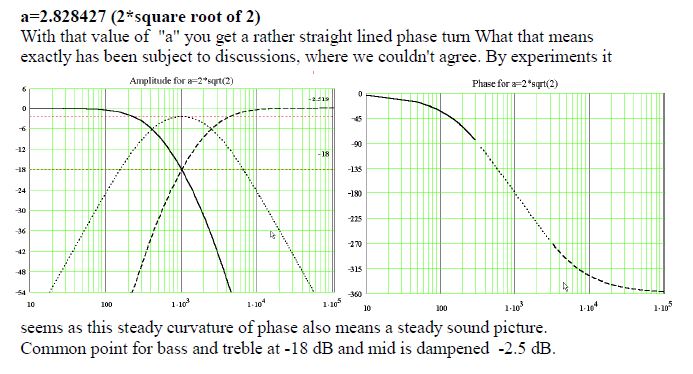
The maths is based on the 200-y-o function of a complex variable from Augustin Louis Cauchy that has left lesser men broken. But the uncanny thing about mathematical truth, when proven, is it's right for eternity. 😎
This is a thought experiment by Steen Duelund about the box and the room:
TBH, this gets very little love at this forum. But really the speaker is a box, and the room is a box. So like Alan Shaw said, it's boxes within boxes.
Or like the lady who said the world is held up by a turtle, and somebody asked her what is holding that turtle up, she said it's turtles all the way down. 😀
Steen went way further into filter theory. He gave us the theory of a 3-way:
The maths is based on the 200-y-o function of a complex variable from Augustin Louis Cauchy that has left lesser men broken. But the uncanny thing about mathematical truth, when proven, is it's right for eternity. 😎
Quite so, although I suspect it's less a case of 'little love' so much as the fact that most experienced designers know that sufficiently well that they don't feel they need to repeat it continually.
I think you put it well when you said 'a' 3 way. Not 'the only type thereof' of course. Duelund 3-ways have many positive attributes; since there are no free lunches in audio, these also come at a price, the most significant being considerable BW demands on the midrange, both in terms of frequency / amplitude response & distortion performance. However, this is only connected to Ariels in the abstract sense that they both require wide, linear BW drive units.
I think you put it well when you said 'a' 3 way. Not 'the only type thereof' of course. Duelund 3-ways have many positive attributes; since there are no free lunches in audio, these also come at a price, the most significant being considerable BW demands on the midrange, both in terms of frequency / amplitude response & distortion performance. However, this is only connected to Ariels in the abstract sense that they both require wide, linear BW drive units.
What I found astonishing about Duelund's work, is he managed to show that a two-way is just a three-way where the mid gets turned to zero level... 😀
Anyway, why are we agonising about a replacement for the Vifa P13WH?
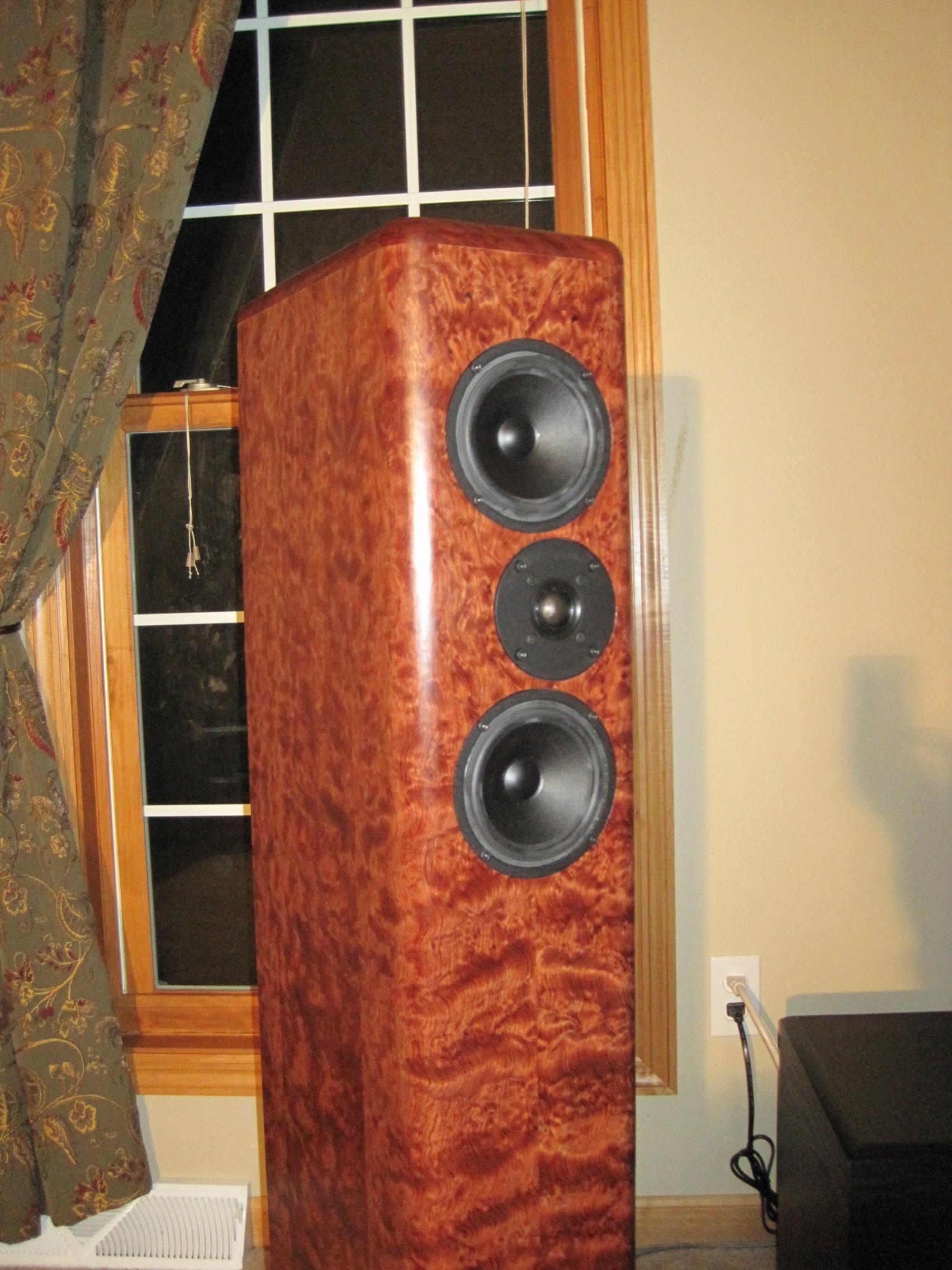
Joe Rasmussen has got his 2.5 way Elsinore's working with 4 different woofers to date.
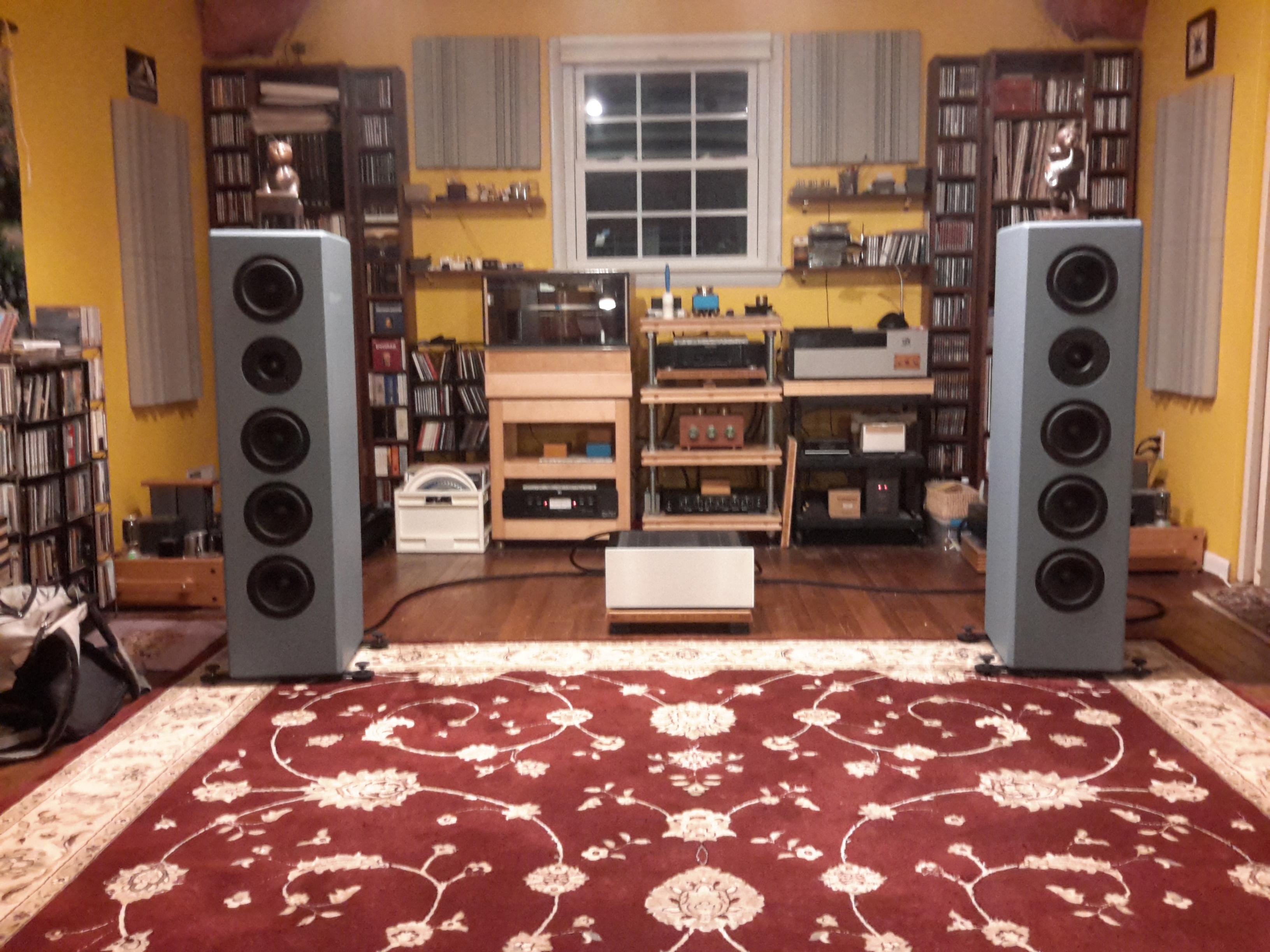
Peerless 830874 (the polycone), 830875 (Paper) and two SB Acoustics 17 units:
Elsinore Speakers DIY
The Peerless 830860 seems to fit the bill. Probably some SB Acoustics MFC units do too.
Anyway, why are we agonising about a replacement for the Vifa P13WH?
Joe Rasmussen has got his 2.5 way Elsinore's working with 4 different woofers to date.
Peerless 830874 (the polycone), 830875 (Paper) and two SB Acoustics 17 units:
Elsinore Speakers DIY
The Peerless 830860 seems to fit the bill. Probably some SB Acoustics MFC units do too.
I must be like that "Harry Bosch" character in Michael Connelly's LAPD detective novels. 😱
The thing is Harry is just relentless...
Here's a little Oumnia speaker by Joachim Gerhard.
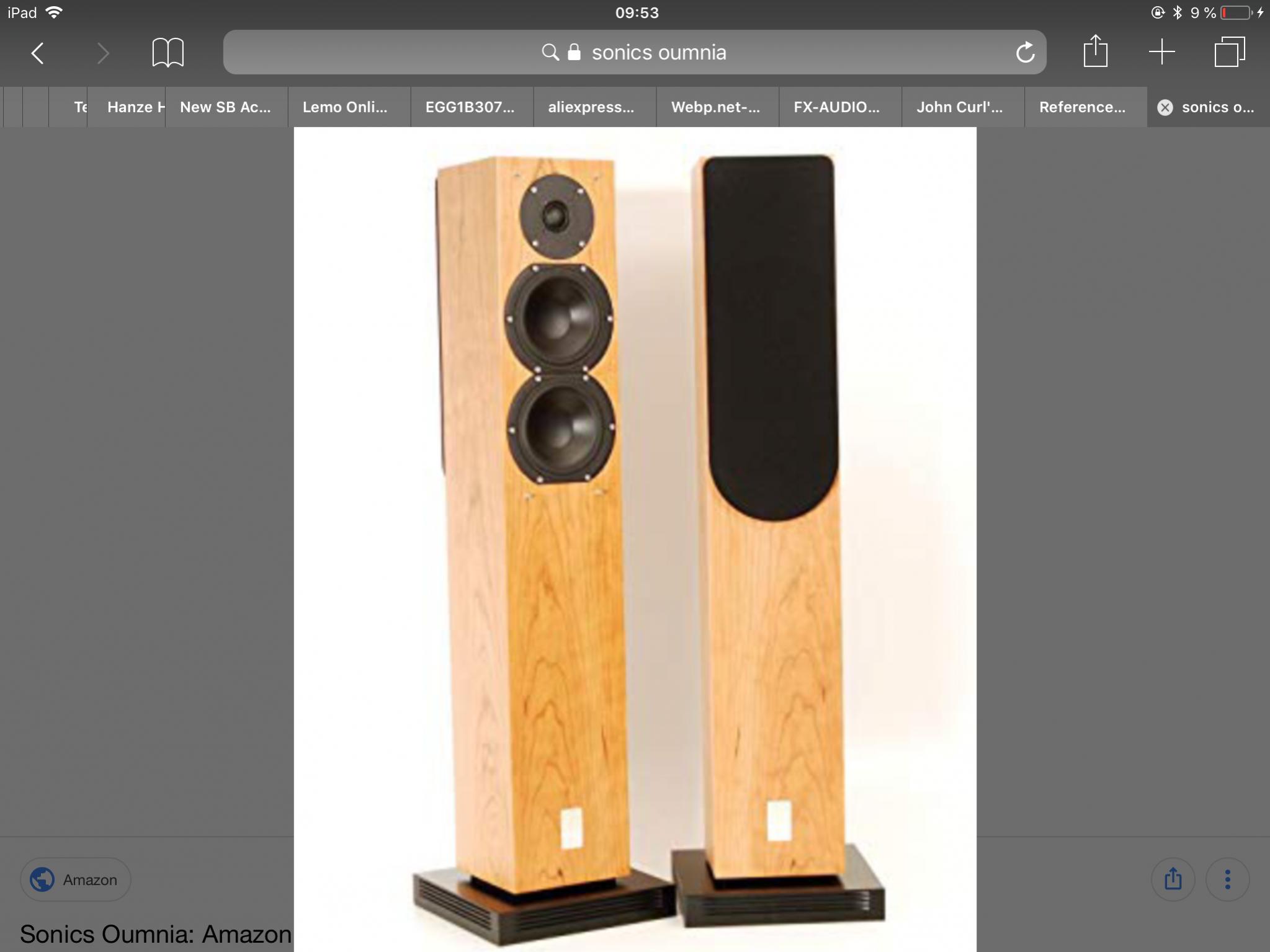
I know a Peerless driver when I see it. Usually polycones (no nasty breakups!).
TBH, only Joachim knows if that is the TMM equivalent of an MTM. Or a 2.5 way. 5" or 6" leaves me vague too.
But for sure, a lot to like, and not a million miles away from the Ariel.

The thing is Harry is just relentless...
Here's a little Oumnia speaker by Joachim Gerhard.
I know a Peerless driver when I see it. Usually polycones (no nasty breakups!).
TBH, only Joachim knows if that is the TMM equivalent of an MTM. Or a 2.5 way. 5" or 6" leaves me vague too.
But for sure, a lot to like, and not a million miles away from the Ariel.
Because while not perfect the old P-13 is [or was] simply so easy to work with and hard to get wrong. Using it in a 3-Way it can be used without a crossover at all if power is going to be limited, small sealed enclosure naturally
It is my beloveds favourite mid to listen to as it has no real flaws at reasonable loudness levels
It is my beloveds favourite mid to listen to as it has no real flaws at reasonable loudness levels
I must be like that "Harry Bosch" character in Michael Connelly's LAPD detective novels. 😱
The thing is Harry is just relentless...
Here's a little Oumnia speaker by Joachim Gerhard.

I know a Peerless driver when I see it. Usually polycones (no nasty breakups!).
Yes indeed; those baskets and cones make them straightforward to identify, and lest there was any doubt, Joachim has explicitly stated that's what they are:
https://www.diyaudio.com/forums/ven...oachim-gerhard-cabinets-kits.html#post5504875
TBH, only Joachim knows if that is the TMM equivalent of an MTM. Or a 2.5 way. 5" or 6" leaves me vague too.
Well, the measurements on the above-linked thread appear to indicate a 2-way with a crossover frequency of about 2KHz, although Joachim also notes that for some of the boxes he was / is selling off, he'd re-jigged the filter in the light of subsequent experience, so it's possible the originals were different.
But for sure, a lot to like, and not a million miles away from the Ariel.
No. All that's different is the tweeter, the driver configuration, the enclosure sizes and shapes, the enclosure acoustical loads, the crossover frequencies, the crossover electrical and acoustical slopes, and the overall voicing, since Lynn and Joachim have very different objects. Apart from that, there is very little difference between them. 🙂
Granted, they certainly do share the common trait of midbass drivers that have a well-damped polypropylene cone with a broad operating BW.
Last edited:
I gotta admit I wonder how I get away with different drivers, different crossovers, different voicing an' all that? 😱
I just looked at a well-selling old speaker like the Henry Kloss KLH Model 6.
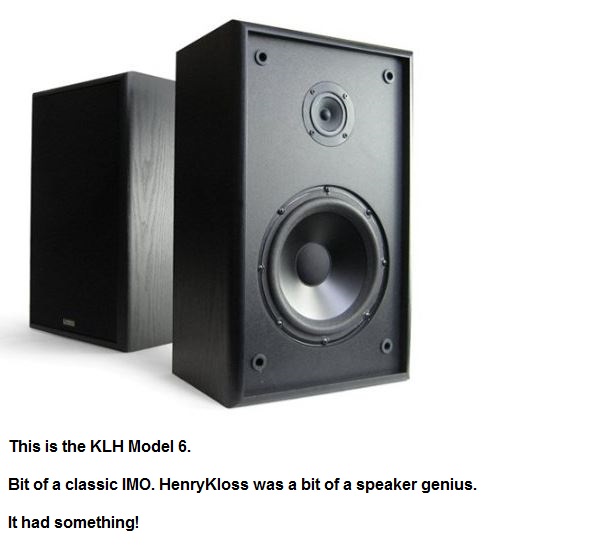
And so built something along the same lines:
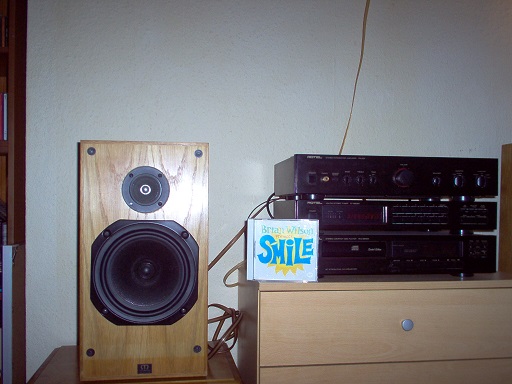
You can't keep a good idea down, IMO. Sweet sound. Course I could do better... but not bad.
I just looked at a well-selling old speaker like the Henry Kloss KLH Model 6.
And so built something along the same lines:
You can't keep a good idea down, IMO. Sweet sound. Course I could do better... but not bad.
😉Do I detect just a small hint of sarcasm there Scottmoose😉
A little wry humour perhaps. 😉 In all seriousness though, no more intended than that. I tend to define sarcasm as something with intent to offend, and I hope (doubt) anybody on this forum is that vacuous. We're all here to enjoy the hobby.
We are all toilers in the vinyard in the end. And a little humour certainly lightens the load! 😀
Here's where I have got to on Lynn Olson's 5" polycone midbass MTM Ariel:

I used to have a MS821C centre speaker by Mordaunt-Short along the same lines, actually series wired 4 ohm basses:
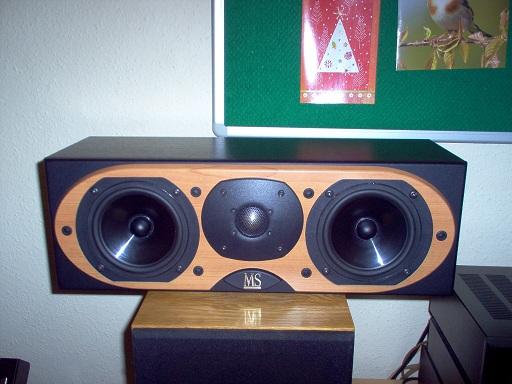
If I had had two of them I probably would have stopped there!
They had an illustrious predecessor in the little MS10i:
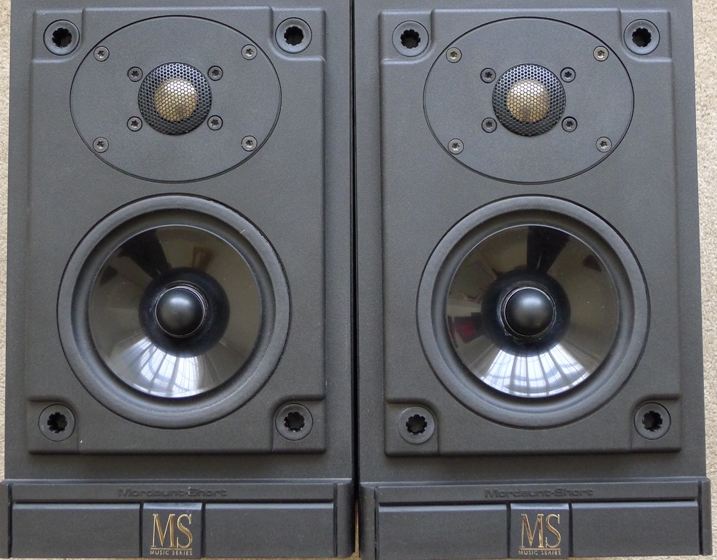
I have managed to dig up a picture of my MS10i setup in the 1980's, and a ludicrous stack of Rotel Amps, DACs, CDs and all the rest of it, including a potted plant and a rainbow ( which doesn't work well in B&W, but was done with overhead coloured spotlights... ) :
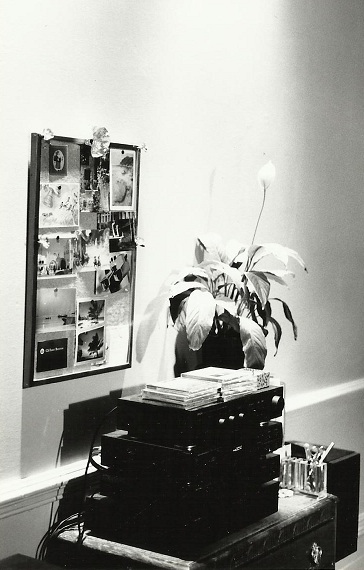
They didn't go very loud, as you would expect from a 5" bass and metal tweeter with a first order crossover, but a lot to like.
The MTM has an illustrious history, here with 4" Peerless polycones and a tweeter that looks a bit Monacor:
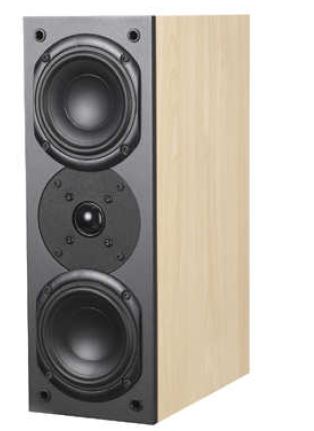
Why MTM is a good idea is the twin basses give out 6dB more level for the same distortion. Er, that's most of it. 🙂
Here's where I have got to on Lynn Olson's 5" polycone midbass MTM Ariel:
I used to have a MS821C centre speaker by Mordaunt-Short along the same lines, actually series wired 4 ohm basses:
If I had had two of them I probably would have stopped there!
They had an illustrious predecessor in the little MS10i:
I have managed to dig up a picture of my MS10i setup in the 1980's, and a ludicrous stack of Rotel Amps, DACs, CDs and all the rest of it, including a potted plant and a rainbow ( which doesn't work well in B&W, but was done with overhead coloured spotlights... ) :
They didn't go very loud, as you would expect from a 5" bass and metal tweeter with a first order crossover, but a lot to like.
The MTM has an illustrious history, here with 4" Peerless polycones and a tweeter that looks a bit Monacor:
Why MTM is a good idea is the twin basses give out 6dB more level for the same distortion. Er, that's most of it. 🙂
Last edited:
That picture reminded me of these — very compact (13 litres BR) and XO below 1/4 wavelength of the C-C:
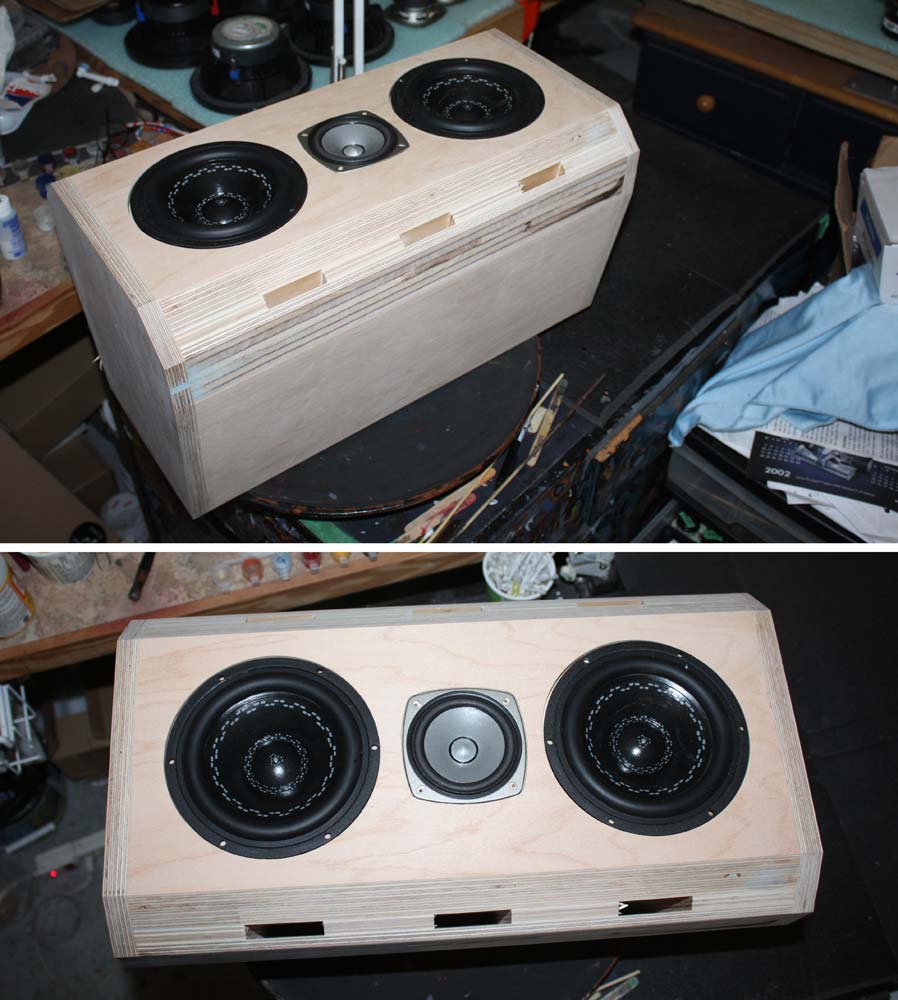
They worked very well but the drivers got pinched fot Tysen V2 (same config but W14 in a Woden TL), but the cabinets seem to have vanished.
dave
- Home
- Loudspeakers
- Multi-Way
- Drivers for Ariel speakers